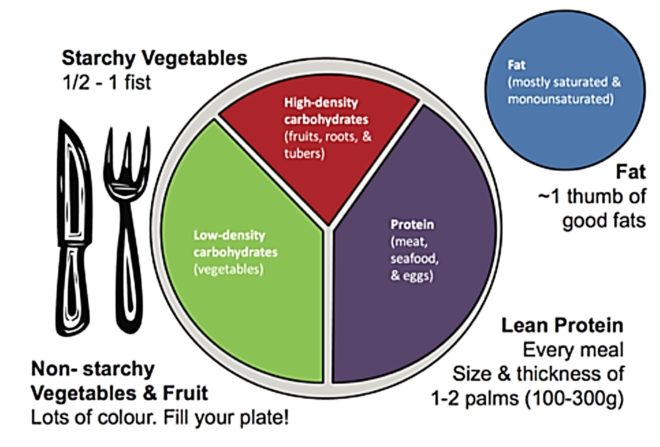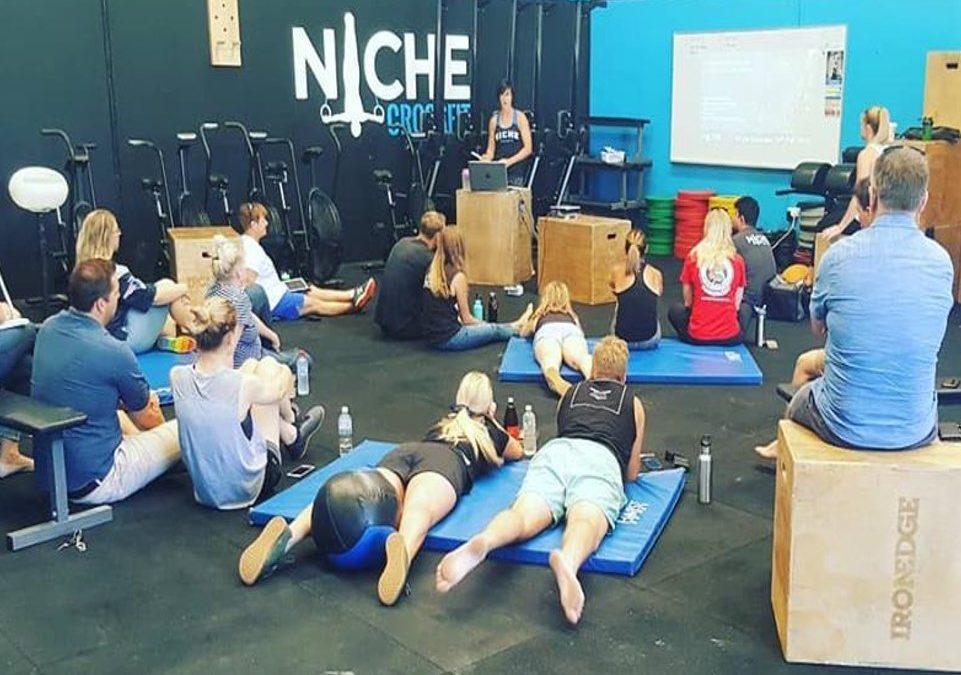Nutrition is way simpler than people make it!
1. Eat Natural, whole & unprocessed food
2. Not too much
3. Mostly plants
This is the best practice model- based on the largest volume of evidence. Three basic concepts that very few nutritionist in the world would argue with.
Everything that we talk about once we get away from these three concepts carries with it some sort of agenda in my mind. When we talk about macronutrient plans, carb-back-loading, paleo, zone- someone’s trying to sell you their methodology, a program, a book, etc.
What’s more- people are delving into all these “diets”, yet they’re not achieving results. We’ve complicated something that doesn’t need to be complicated.
1. Eat Natural Whole and Unprocessed
What is natural?
The word “natural” provides a framework- It’s about eating whole foods and things that are fairly unprocessed. What it doesn’t mean is that every processed food, or every synthetic chemical or everything that’s been created by man is inherently bad for us. That would be a very unscientific place to come from because that doesn’t actually make any sense.
Why Natural, Whole & Unprocessed?
- It delivers the greatest nutrient density in the least calorific and lowest sugar form.
- Because we have the data to show us that people who eat this way have lower rates of cardiovascular disease, and diabetes and liver disorders and other stuff that affect us negatively.
- Studies show that people on diets like paleo, primal, or various raw food, vegan, or low carb, high-fat diets focused on real foods, are able to auto-regulate really well.
What is Auto-regulation?
Autoregulation is instinctually consuming what you require, not more. By eating a diet that’s based on whole and unprocessed food, we’re more likely to be able to do this whilst becoming more metabolically flexible. Why is this important? Because if we’re looking to lose fat, we’ve got two options:
- We can either restrict our calories (starve yourself).
- We can try and auto-regulate.
What is Metabolic Flexibility?
The ability to use fat and carbohydrates as fuel, effectively and efficiently. It’s not a defined term- but there are indicators. Metabolic flexibility is the ability to switch from one fuel source to the next. Due to possible discontinuities in both the supply and demand for energy, humans need a clear capacity to use fats and carbohydrate fuels and transition between them.
2. Not Too Much
So we start with natural, whole & unprocessed foods- number 1. But on top of this, we can move into a bit of extra quantification as well. And this is where we get the best of both worlds.
Regardless of whether you’re trying to achieve a real world class level of fitness or you’re just trying to lose ~5kgs, it all starts in the same place. It’s all a matter of what are your eating and how much. From there, competitive athletes dive down into a much deeper rabbit hole and go a lot more specific.
So, how do we quantify?
Macros:
Eating a good balance of protein, fats, and carbohydrates every time you eat promotes a good hormonal response helping with satiation and cell repair. Tracking your macros can be helpful for some, but be careful not to brutalise macros by flexible dieting, taking away rule number 1.
It may fit your macros, but does it fit your micros?
If it’s dialed in and it works, it works. However, that’s not for the majority of people. For the majority of people, it ends up being this really complicated math problem where you’re trying to get in a certain amount of protein, fats, and carbohydrates. Good nutrition then becomes a math game, which is so not the way we’re supposed to eat.
Simplified Macros
Keep it simple! Eat a balanced plate every time you eat. Aim for about a palm size serving of protein, a palm-size serving of starch, and a thumb size serving of fat. You’re done.
- ~150-200g chicken, beef, salmon, etc.
- An apple, or a serving of sweet potato, or some small serving of rice (palm size).
- Some good fats.
- The rest of your plate becomes vegetables.

3. Mostly plants
Plants are the most nutrient dense food. They have the most zinc, magnesium, vitamin A, B, C, etc. You get the most “good stuff” in the least calorie-dense and low-sugar form through vegetables. It’s hard to overeat on vegetables, particularly if they’re raw.
The other thing about not too much is you’re going to eat that 3-4 times a day. If you’re a male with a large-xl shirt, you should be 4. Female with a s-m shirt, you should be 3. Somewhere in-between for everybody else.
From there, what we’re going to do is eat only those meals.
- No going back for seconds.
- No snacking between meals.
- That’s the secret to not too much- It can’t get easier than that!
Carbohydrates are Activity Dependant:
They are not essential! Not essential with respect to nutritional science. Essential means that it cannot be produced in the body- we have to ingest it. We have essential fats and proteins, but the body can produce glucose in-vivo very well. So we can consider carbohydrate to be the biggest swing macronutrient. We need to preserve a certain baseline intake of protein… or we die. We need to consume a baseline intake of fats… or we die!
How Much Carbohydrate?
Intake should be specific to an individual’s need. The best place to start is with best practice models – based on the largest volume of evidence. However, every single individual does not fit the best practice model. Therefore once a nutritional protocol is prescribed for an individual, there needs to be closely monitored and adjustments made until ideal levels are found.
Lever Nutrients
When we look at diet as a whole, people who eat natural whole & unprocessed food typically eat less without realising it. However, each macronutrient has a level effect on total intake:
- SUGAR = not satiating, leaves craving more → total intake levers up.
- PROTEIN = Satiating → typically people will lever down.
- FAT= Although it is not as satiating as protein at the time of consumption, generally intake over the next few days is lowered → people tend to progressively eat less without realising over a charted food intake.
Australian Nutrient Reference Values
When we consider the prevalence nowadays of increasing levels of hyperinsulinemia, pre-diabetes, increasing rates of metabolic syndrome, diabetes, etc. I think we can all agree that recommended 65%+ calories from carbs has probably not served us in the excessive amounts that we’ve typically been provided.
Do some people do well one a try high-carb diet- absolutely! That’s why we need to look at carb appropriateness of the diet. Probably, for the majority of our population, does 65%+ work? No.
However, the recommendation are getting better! The new recommendation is at least 45%+ of our calories from carbs. Hurray for modern science!
Calories Matter
At the end of the day, it does come down to calories. This can be very affronting for people because they don’t want to believe it- they want to focus on the quality of food and not on how much you eat. But we need to be very aware of why that is important.
The amount of each macronutrient we take in is going to drastically affect what we’re storing & that’s going to be the biggest thing. For example, if we have protein as a high proportion of our diet, it’s likely that we will lean up – Simple.
Along with that, consider again the idea of lever nutrients → increase the quality of the diet and it’s likely that we will auto regulate more effectively. Thus, we will change the calorie balance anyway!
We need to be aware that a lot of what we do changing macros, or changing quality of the food actually ends up changing calorie intake & that’s where all of the benefits are.
Changing the diet in order to change calories is the most important thing because adherence and compliance are the most difficult things in nutrition.
If we can make adherence and compliance instinctual, then eating natural whole unprocessed food, not too much and mostly plants will become autonomic and you reap all the health and fitness related rewards of being an awesome human being!
Kick-start your nutrition journey with a Nutrient Analysis Report to see how your current food intake stacks up against the demands of your current lifestyle, plus any health and fitness goals you have. Once this is completed, Nutritional Coaching is available during which we can formulate a tailed plan to help achieve your goals whilst creating inherent lasting and sustainable changes.
